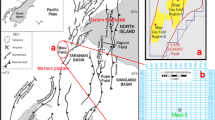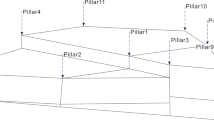Abstract
Reservoir models are essential if we need to clearly understand the fossil resources and, hence, to make better use of them. Feeding these models with physical properties on the basis of wells data is a key step in their construction. Line-support (LS) grid is the most popular grid in reservoir engineering, it is massively used for reservoir simulations. In the current methods used to populate with properties the LS grid of a reservoir unit, a Cartesian grid of equivalent size (in each direction), obtained by averaging the edge lengths, is first of all completed. The properties calculated in this way are then transferred as they are into the initial LS grid, because there is cell-for-cell correspondence. This leads to distortion of the Cartesian grid, making it fit the shape of the LS grid. This has the effect of altering calculations of correlation distances between well markers in geostatistical population simulations. Consequently, this primarily induces distortions on the simulated bodies. To resolve this problem, in this paper, we propose innovative methods for a “smooth” conversion from the LS grid of the structural space to the Cartesian grid of the geostatistical population space. The basic principle is to calculate the correlation distances between wells on the basis of “quasi-isometric” flattening of the stratigraphic unit LS grid in the population space. This same flattening technique is then used for inverse transfer of the properties from the population space to the structural space.




















Similar content being viewed by others
References
Gibbs A (1983) Balanced cross section from seismic sections in area of extensional tectonics. J Struct Geol 5(2):153–160
Galera C, Bennis C, Moretti I, Mallet J-L (2003) Construction of coherent 3D geological blocks. Comput Geosci 29:971–984
Matheron G, Beucher H, de Fouquet C, Galli A, Ravenne C (1987) Conditional simulation of the geometry of fluvio-deltatic reservoirs. Proceeding of the SPE ATCE Conference, Dallas, p 591–599
Deutsh CV, Journel AG, GSLIB (1992) Geostatistical software library and user’s guide. Oxford University Press, New York
Chilès JP, Delfiner P (2012) Geostatistics: modeling spatial uncertainty. Wiley, New York
Galli A, Beucher H, Le Loch G, Doligez B (1994) The Pros and Cons of the Truncated Gaussian method. In: Armstrong M, Down PA (eds) Geostatistical simulations. Kluwer Academic, Norwell, pp 217–233
Schmitt M, Beucher H (1996) On the inference of the Boolean model. In: Baafi EY, Schofield NA (eds) Geostatistics Wollongong ′96, vol 1. Kluwer Academic, Norwell, pp 200–210
Le Ravalec M, NoeTinger B, Hu LY (2000) The FTT moving average (FTT-MA) generator: an efficient numerical method for generation and conditioning Gaussian simulations. Math Geol 32(6):701–703
Zigelman G, Kimmel R, Kiryati N (2002) Texture mapping using surface flattening via multidimensional scaling. IEEE Trans Vis Comput Graph 8(2):198–207
Shih-Wen H, Rong-Qi C (2007) A surface flattening method based on numerical simulation. In: Proceedings of the 16th IASTED international conference on applied simulation and modelling, Palma de Mallorca, p 267–270
Zhong Y, Xu B (2006) A physically based method for triangulated surface flattening. Comput Aided Des 38:1062–1073
Borrel P, Rappoport A (1994) Simple constrained deformations for geometric modelling and design. ACM Trans Graph 13(2):137–155
Bennis C, Sassi W, Faure JL, Chehade FH (1996) One more step in gocad stratigraphic grid generation, taking into account faults and pinchouts. Proceeding of the European 3D reservoir modelling conference (SPE 35526). Stavanger, p 307–316
Caumon G, Mallet JL (2004) 3D stratigraphic models: representation and stochastic modelling. International association for mathematical geology, 11th International Congress, Université de Liège, Belgium
Caumon G, Lepage F, Sword C, Mallet J-L (2004) Building and editing a sealed geological model. Math Geol 36(4):405–424
Chambers KT, DeBaun DR, Durlofsky LJ, Taggart IJ, Bernath A, Shen AY, Legarre HA, Goggin DJ (1999) Geologic modelling, upscaling and simulation of faulted reservoirs using faulted stratigraphic grids. In: Proceeding of the SPE fifteenth reservoir simulation symposium (SPE 51889), Houston, p 119–130
Johnson C, Jones T (1988) Putting geology into reservoir simulations: a three-dimensional modeling approach. In: Proceedings of the SPE ATCE (SPE 18321), Houston, p 585–594
Mallet J-L (2004) Space-time mathematical framework for sedimentary geology. Math Geol 36(1):1–32
Swanson D (1988) A new geological volume computer modeling system for reservoir description. In: Proceedings of the SPE ATCE (SPE 17579), New Orleans, p 293–302
Adachi J, Hartman T, Lomas L, Plumb R, Gil I, Sanchez M, Taghavi R (2008) “Automatic grid generation, property rezoning and geomechanical analysis of petrel-ECLIPSE petroleum reservoir data with FLAC3D”, in continuum and distinct element numerical modeling in geo-engineering. In: R. Hart et al. (eds) Proceeding of the 1st International FLAC/DEM Symposium. Itasca Consulting Group, Minneapolis, August 2008 (Paper No. 02-01)
Blacker T (1996) The cooper tool. In: Proceedings of the 5th international meshing roundtable, Pittsburgh, p 13–30
Owen SJ (1998) A survey of unstructured mesh generation technology. In: Proceedings of the 7th international meshing roundtable, Dearborn, p 239–267
Frey PJ, George PL (2010) Mesh generation: application to finite elements second edition. Wiley Online Library, Hoboken
Horna S, Bennis C, Borouchaki H, Delage C, Rainaud JF (2010) Isometric unfolding of stratigraphic grid units for accurate property populating—mathematical concepts. In: Proceedings 12th European Conference on the Mathematics of Oil Recovery (ECMOR), Oxford, p 1–12
Horna S, Bennis C, Crabie T, Peltier S, Rainaud JF (2010) Extracting and unfolding a stratigraphic unit to update property population. In: 72nd EAGE Conference and Exhibition, Barcelona, p 1–6
Borouchaki H (2008) APLAT3D surface flattening toolkit. University of Technology of Troyes, Troyes
Villard J, Borouchaki H (2005) Adaptive meshing for cloth animation. Eng Comput 20:333–341
Cherouat A, Borouchaki H, Giraud-Moreau L (2010) Mechanical and geometrical approaches applied to composite fabric forming. Int J Mater Form 3(2):1189–1204
McCartney J, Hinds BK, Seow BL (1999) The flattening of triangulated surfaces incorporating darts and gussets. Comput Aided Des 4(31):249–260
Bennis C, Vézien JM, Iglésias G (1991) Piecewise surface flattening for non-distorted texture mapping. ACM SIGGRAPH ′91, Computer Graphics, Las Vegas, pp 237–246
Levy B, Petitjean S, Ray N, Maillot J (2002) Least squares conformal maps for automatic texture atlas generation. SIGGRAPH 2002. ACM Trans Graph 21(3):362–371
Lévy B, Mallet JL (1998) Non-distorted texture mapping for sheared triangulated meshes. In: ACM SIGGRAPH, Proceedings of the 25th annual conference on computer graphics and interactive techniques, Orlando, p 343–352
Maillot J, Yahia H, Verroust A (1993) Interactive texture mapping. In: ACM SIGGRAPH, Proceedings of the 20th annual conference on computer graphics and interactive techniques, Anaheim, p 27–34
Saroul L, Figueiredo O, Hersch RD (2006) Distance preserving flattening of surface sections. IEEE Trans Vis Comput Graph 12(1):26–35
Sheffer A, Hart JC (2002) Seamster: inconspicuous low-distortion texture seam layout. Proceedings of the conference on visualization ′02. Boston, 27 October–01 November 2002, p 291–298
Acknowledgments
The authors are very grateful to Thomas Crabié, Christophe Delage and Emmanuel Klein for their help to implement the presented algorithms and for their valuable remarks.
Author information
Authors and Affiliations
Corresponding author
Rights and permissions
About this article
Cite this article
Bennis, C., Borouchaki, H., Dumont, C. et al. 3D line-support grid flattening for more accurate geostatistical reservoir population with petrophysical properties. Engineering with Computers 30, 403–421 (2014). https://doi.org/10.1007/s00366-012-0311-9
Received:
Accepted:
Published:
Issue Date:
DOI: https://doi.org/10.1007/s00366-012-0311-9




